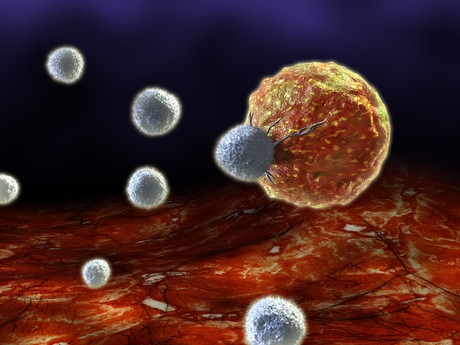Alternative splicing changes may trigger cancer

Researchers at Sanford Burnham Prebys have shown that alterations in alternative splicing may trigger cancer.
In a new study published in the journal Cell Reports, researchers explain that although DNA is the instruction manual for cell growth, maturation, division and even death, it's proteins that actually carry out the work. The production of proteins is a highly regulated and complex mechanism — cellular machinery reads the DNA fragment that makes up a gene, transcribes it into RNA and, from the RNA, makes proteins. However, each gene can lead to several RNA molecules through alternative splicing, an essential mechanism for multiple biological processes that can be altered in disease conditions.
Using data from more than 4000 cancer patients from The Cancer Genome Atlas (TCGA project), a team led by Eduardo Eyras, ICREA research professor at the Department for Experimental and Health Sciences of the Pompeu Fabra University (DCEXS-UPF), has analysed the changes in alternative splicing that occur in each tumour patient and studied how these changes could impact the function of genes. The results of the study show that alternative splicing changes lead to a general loss of functional protein domains, and particularly those domains related to functions that are also affected by genetic mutations in cancer patients.
"Thanks to our previous research, we know that tumour type and stage can be predicted by observing alterations in alternative splicing," said Eyras, head of the research group in Computational RNA Biology from the Research Programme on Biomedical Informatics (GRIB), a joint research unit of the Hospital del Mar Medical Research Institute (IMIM) and the DCEXS-UPF. "With this new study, we have discovered that changes in alternative splicing that occur in cancer impact protein functions in a way that is similar to that previously described for genetic mutations," he added.
All of these alterations in protein functions would cause changes in cells morphology and function, giving them the characteristics of tumour cells, such as a high proliferative potential or the ability to avoid programmed cell death.
According to Adam Godzik, professor at Sanford Burnham Prebys Medical Discovery Institute (SBP) and co-author of the study, "These changes potentially have oncogenic power in cells, which means the ability to turn a healthy cell into a cancer cell." A novel aspect of the study is that these changes tend to occur in genes other than those often mutated in cancer, and in patients with a low number of mutated genes.
"Changes in alternative splicing provide cancer with new ways in which it can escape fine cellular regulation. Therefore, the study of alternative splicing opens new doors in the research to cure cancer and may provide new alternatives to the treatment of this disease."
Solar-powered reactor uses CO2 to make sustainable fuel
Researchers have developed a reactor that pulls carbon dioxide directly from the air and converts...
Scientists simulate the effects of an asteroid collision
How would our planet physically react to a future asteroid strike? Researchers simulated an...
2024 was warmest year on record, 1.55°C above pre-industrial level
The World Meteorological Organization says that 2024 was the warmest year on record, according to...




